RAIL’s Open Access pages were set alight with debate in 2014, after RAIL fares expert Barry Doe described the plan to bring High Speed 1 trains to Hastings as “the most ridiculous I have ever heard in half-a-century of railway ideas” (The Fare Dealer, RAIL 748).
Yet, despite the technical constraints, the concept of running HS1 trains to Hastings is perhaps an obvious and proven one. After all, sleek blue Hitachi Class 395 Javelins whisk commuters down the newer line, and then at Ashford and Ebbsfleet trundle off onto the classic network to places such as Canterbury, Dover, Faversham, Margate and Ramsgate.
Even some of Kent’s less populous towns and villages have gained HS1 benefits, with a new route taking in more of the coastal destinations such as Deal, Martin Mill, Sandwich and Walmer under the Integrated Kent franchise currently operated by Southastern.
At a local rail summit in March 2014, Conservative MP for Hastings Amber Rudd championed the extension of the HS1 network to serve the town.
With a population of 139,271 (more than Bedford, but fewer than St Albans), Hastings is the 65th largest settlement in the UK. And with the support of Secretary of State for Transport Patrick McLoughlin, who gave an “absolute commitment” to the scheme at the summit, it appeared that the battle to win faster, better-quality and higher-capacity train services to London had been won.
Or had it? While there is no detection of any disagreement among local politicians, the business community and passenger groups that HS1 trains to Hastings would be anything other than beneficial for the area, RAIL understands that the finance and the project resources for such a scheme remain somewhat sketchy. Also, ministerial assurance is far from a done deal.
Local leaders want journey times to improve, thereby making Hastings a better option for potential investors in the area, as well as making life easier for London commuters from the town (it is hoped this market can expand).
It is a town bristling with opportunity and potential. But as Hastings Borough Council Leader Jeremy Birch is keen to point out to RAIL, it is also a town with concerns over the more immediate disruption caused by the rebuilding of London Bridge, which is used by many Hastings-London commuters.
“Hastings-Charing Cross won’t stop for 18 months, and Hastings-Cannon Street won’t stop for 18 months after that - with three years of disruption,” says Birch. “We don’t think that Southeastern has adequately advertised the fact that this is going to happen.”
Birch suggests that to try and tackle the potential disruption, Hastings travellers should be allowed to travel via HS1, changing at Ashford. After all, landslips last winter near Crowhurst and West St Leonards led to Ashford and St Pancras being allowed on the standard ‘non-HS1’ fare for a brief period.
Rail services are important to Hastings - a hardy contingent makes the journey to the central London terminus stations of Charing Cross and Cannon Street. But for Birch, good rail services aren’t just about getting commuters to London, they’re also about bringing people into the town - to live in and buy property, and to work.
“Hastings is getting a better public profile and better press, and a cultural agenda. You need to get people here and enjoy the cultural offer,” he says, with an eye on the 950th anniversary of the Battle of Hastings coming up in 2016.
“There is a movement of creative and cultural people into our area from Brighton and London - you can get a character property in Hastings for a fraction of what you could sell your London flat for.”
All of the above are important for the people the council wants to attract, while travel times are also “really important”, according to Birch.
An easier Hastings-London St Pancras commute of around 68 minutes is envisaged, comparing favourably with the one-hour London Victoria-Brighton journey. And despite the present 1hr 40mins London journey time, Hastings can already compare favourably with Brighton - Victoria is “out on a limb”, and the choice of Charing Cross, Cannon Street or St Pancras International (the latter involving a change at Ashford) offers better connectivity for West End and City-headed commuters.
However, Birch knows that the HS1 option is the only realistic way of speeding up London journey times.
“It’s important for continued regeneration,” he says. “The cost of improving by 15-20 minutes our line to Charing Cross is extremely expensive, because of the tunnels, which are inadequate.”
What about McLoughlin’s “absolute commitment”? With no firm plans at present, Birch says he accepts that the case has to be made.
“We are funding a business case examination. Mott McDonald will deliver it. We need to make the case that it is a better investment than £120 million in the North of England or the Midlands. We will develop a business case for argumentation why this is justified.”
It’s Network Rail’s job to make the technical case. In order to make use of the HS1 infrastructure arriving from Hastings, trains arriving at Ashford International from a westerly direction will (using a solution yet to be identified) need to cross the station to reach HS1. As yet, the required switches or crossings do not exist, let alone anything more substantial, while signalling would also need to re-configured.
Then there is the question mark over what type of electrification is installed, as well as whether to include any level of dualling on the existing Marshlink route to Ashford.
NR is carrying out some as yet unpublished route studies, with Lead Development Manager Andrew Wood tasked with looking at the Hastings-Tonbridge line.
“We were asked whether there was anything NR could do to double the route,” he tells RAIL. But the danger was that NR would be “spending millions to gain seconds”, so attention turned to the Marshlink line instead.
And with the eight-stage GRIP template required before any work can begin, Wood reiterates the need to “follow due process”.
Birch suggests to RAIL that it is fairly clear-cut that Marshlink would be electrified with the third rail system, but Wood believes that it is less defined at present.
“We need to electrify Marshlink with either OLE or third rail,” he says. That could involve merely laying a conductor rail from Ore onwards (where the Ore-Ashford non-electrified section begins) or alternatively extending overhead electrification from HS1 to Ore (after which point Javelins would ‘pan-down’ and use third rail). The latter option would potentially complicate matters at Ashford, where all of the other non-HS1 routes use the third rail system.
A longer ‘dynamic’ passing loop at Rye station would also enhance capacity, paving the way for a half-hourly frequency. The likely plan could entail HS1 trains terminating at Bexhill-on-Sea, which has an even longer journey time to London than Hastings. “We cannot forget Bexhill,” adds Wood.
He reiterates that the operation of high-speed EMUs running off HS1 onto classic routes has been successful. However, a larger fleet of Javelin units would undoubtedly be needed for any additional routes - the current fleet of 29 six-car trains operated by Southeastern is already well used.
“High-speed capacity is taken up with the Canterbury and Folkestone routes,” says Wood. He says any additional paths on HS1 - while not exactly a congested route at present - would need to be negotiated, with the potential for future additional international trains. There is also a full work bank in Control Period 5 (2014-19). “Our CP5 work is full with regards to resignalling,” he says.
Hope lies with the Kent Route Study, which kicks off in the spring and which will help inform choices over work that can be undertaken in CP6 (post-2019). Before then, an Electrification Route Utilisation Study, which may or may not be supportive, is due to be published early in 2015.
Wood suggests that Marshlink would need to be among the top ten priorities in order to have a fighting chance of achieving the full HS1 connectivity. While the Department for Transport and Office of Rail Regulation is predisposed towards overhead electrification for any ‘new’ schemes, Wood suggests that in scenarios where NR can prove the case for an ‘infill’ electrification on the third rail network, then that is not out of the question.
Only when those studies are released will it be known how much high-level support there is internally among NR’s planners. Meanwhile, in parallel with local authority work to build a regeneration benefits case, NR is undertaking pre-GRIP work to understand the benefits of the scheme. “From the work we’ve done, we believe we can get a 100-minute Hastings-London journey time down to 68 minutes,” confirms Wood.
But there are severe resource constraints in CP5, and decisions to be made about the train service of the future. Who will fund extra HS1-compatible trains? What will happen to the residual Marshlink service calling at smaller stations such as Appledore and Winchelsea? The Thameslink-Southern-Great Northern franchise (currently operated by Govia Thameslink Railway) is due for renewal in around 2020, which may provide an opportunity to integrate a new Hastings route as well as other remapping of the neighbouring Integrated Kent franchise operated by Southeastern.
Wood is optimistic for Marshlink regardless, suggesting that whether electrification options are fully developed or not, the Kent RUS will “look at the case for Marshlink line speed increases”. Ultimately, however, he adds: “It is up to the DfT to decide what they want to fund. This scheme is in competition with many others.”
Political ambition does not necessarily chime with the ability of NR to undertake the work, let alone fund it from the £38 billion allocated for 2014-2019 (CP5), or indeed CP6.
Yet Hastings MP Amber Rudd is adamant, according to her own website, that such “absolute commitments” are already in place. Referring to McLoughlin’s “absolute commitment”, she appears to suggest that the “new line - being built in 2019 - will mean we can get from Hastings to London in 66 minutes”. So, is that realistic?
“I have wanted to step it up and make it more ambitious,” says Rudd, speaking directly to RAIL on a dark midwinter afternoon.
NR has told Rudd that the main hurdle to overcome with bringing the project forward is signalling expertise. But that’s before a realistic price tag or business case has been adopted for the scheme, as well as the various GRIP stages that any railway infrastructure investment must go through.
Even so, Rudd is optimistic that such challenges can be overcome, with the support of the various councils (East Sussex, Rother and Hastings) working together. RAIL suggests to Rudd that it’s not just about political support or a lack of clear funding, but also a lack of expertise available - the relevant engineers are apparently all busy on other projects.
“I want it to come forward,” she responds. “It’s now about the signalling. I’m continuing to press for it. We have been talking to other rail consultancy firms to bring it forward.”
For an extension of HS1 to happen, Rudd talks of a redesign of Ashford station. There is also mention of a consultancy firm talking to main stakeholders about their views.
More pressingly, she’s concerned about current journey times. With an election around the corner, politicians are keen to have their name attached to any improvements.
“Why does Hastings-London have to stop at so many stations?” she asks.
There is also talk of Southeastern running a Hastings express (an 0804 fast to Tunbridge Wells with an 0934 arrival at Charing Cross), but that train hasn’t appeared in the timetable just yet. Rudd’s desire to see HS1 trains is expressed, alongside her frustration at the “appalling” Southeastern during recent winters, with particular discontent for the operator’s “poor communication”.
She tells RAIL: “Everyone talks about regeneration. That means economic growth. It’s also about improving other elements of the town. Schools want to recruit teachers. It’s about broadening options.” Not least of which is the dualling of the A21 between Tonbridge and Pembury, itself costing £70 million, with work due to start this spring.
Additionally, as Hastings Council’s Birch notes, the cost of going to overhead wires will add to the cost of any upgrade scheme for Hastings-Ashford.
Rudd’s Labour opponent Sarah Owen is hoping to take the parliamentary seat at May’s General Election. She’s concerned about the wider transport issues in the area.
“Everyone of any political persuasion has asked for a decent direct rail link between Hastings and London,” she tells RAIL. “But as well as looking at train services we need a combined transport network with our buses as well.”
For Owen, there is an issue about whether people can rely on the local bus network to and from a train connection in “a town which is incredibly hilly”, with different parts of the community quite spread out.
She refers to earlier proposals to better connect the town via the line to Tonbridge - constrained in places by several Victorian tunnels being too narrow for modern trains to pass, as British Rail was unable to re-engineer them.
“A lot of smaller stations would kick up considerable fuss if they were ever bypassed for a faster route, so the only viable option for a better route to London is via Ashford,” she says.
“I am pleased that NR has done a report into the extension of HS1, but we’ve not seen the full details of it. It’s quite difficult to get the detail that elected members have access to, because I’m a candidate and not the MP.
“We’re all pretty supportive of the idea, but now’s the time to ask how it’s going to be funded and delivered. What sort of service can we expect?
“It’s all very well having a plan for the future, but commuters right now are suffering. If you look at the route from Hastings-Ashford there are a number of smaller stations. Communities now are very concerned. Some certainty for them is needed.
“We need electrification of that railway, but we also need something that is fit for the future. We don’t want to be having this discussion in 20 or 30 years’ time.”
Owen believes it’s not just the line that needs investment, but also the rolling stock itself, although she’d probably find little sympathy with other parts of the country having to use 1980s vintage DMUs.
“We have had a severe lack of investment in our trains. HS1 would be the ideal for me. But we’ve got to get a solution quickly, and economically. We need to know where NR places Hastings and HS1 in its priority list. We want to give commuters a reasonable expectation.”
As the 19th most deprived borough in the UK, Hastings is not an excessively wealthy place, and Owen remarks: “Where do we fit in the priorities down south in Hastings? What do we need to do to bump ourselves up?”
While supportive of a better rail service, Owen’s priority is a “smoother, more reliable, much quicker service that is value for money” - and HS1 could literally be the vehicle for that.
Looking at Hastings, its geography and the potential of its connections to London, it’s not inconceivable that it could become another Brighton - with the right infrastructure in place. Indeed, there’s evidence to suggest that people are already being priced out of an area that has ben dubbed ‘Islington-on-Sea’, and taking up the opportunity of cheaper property in Hastings, even if the job opportunities are more limited.
As Ray Chapman, of the St Leonards and Hastings Rail Improvement Programme (SHRIMP), says: “The real issue for Hastings is that we are not attracting businesses to the town because of that poor connectivity. But we think this probably fits in with CP6 unless there are creative ideas from suppliers such as getting NR down here sooner without blocking other developments.”
Birch agrees: “If the business case and technical case add up - we’re assuming this would be post-2019, early-2020s. But it won’t happen before 2019.”
NR tells Birch that this is because of the physical delivery, particularly signalling, but he counters: “There could be two General Elections before then, so the people offering the absolute commitment might not be in office.”
- This feature was published in RAIL 766 on 21 January 2015

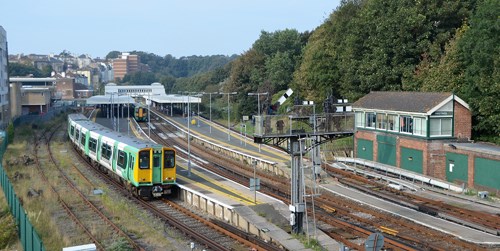
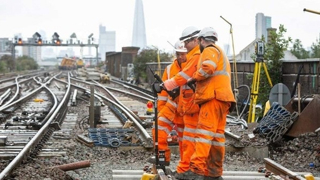
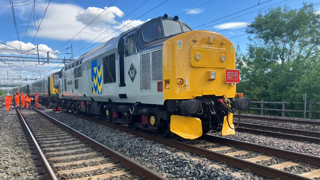

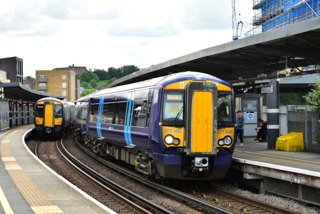
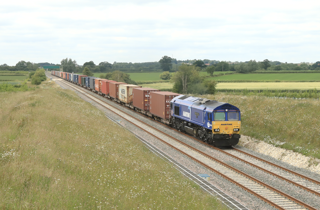










Login to comment
Comments
No comments have been made yet.